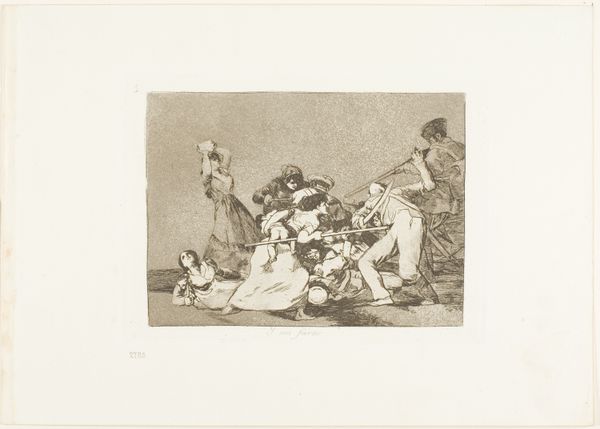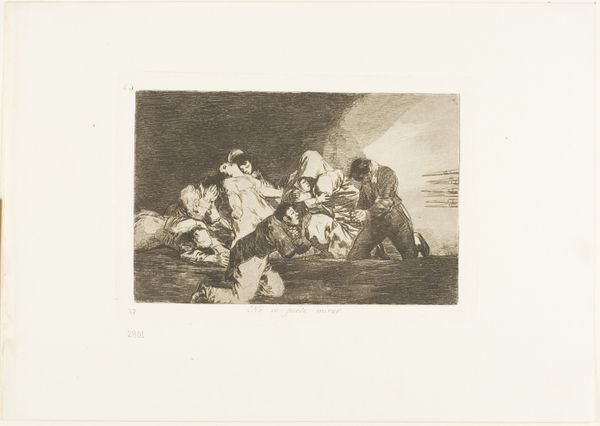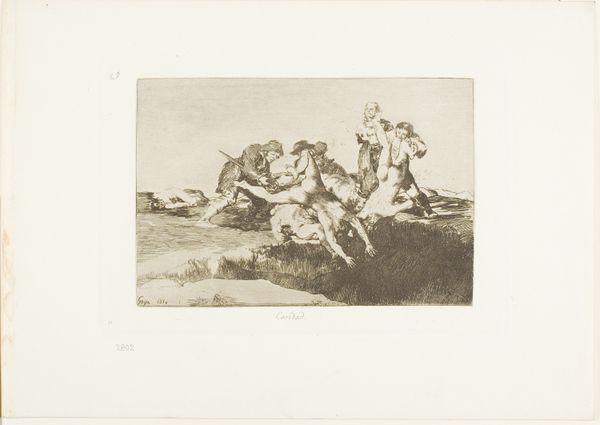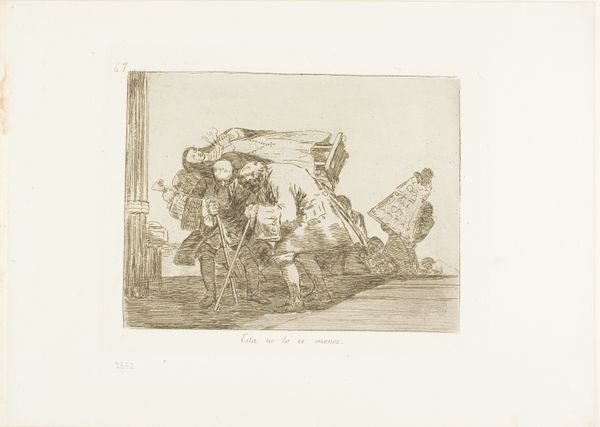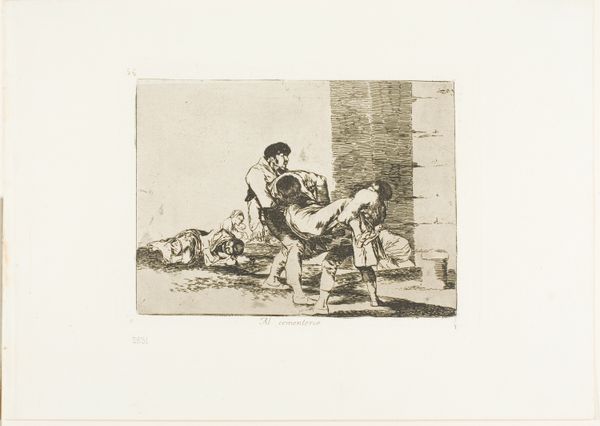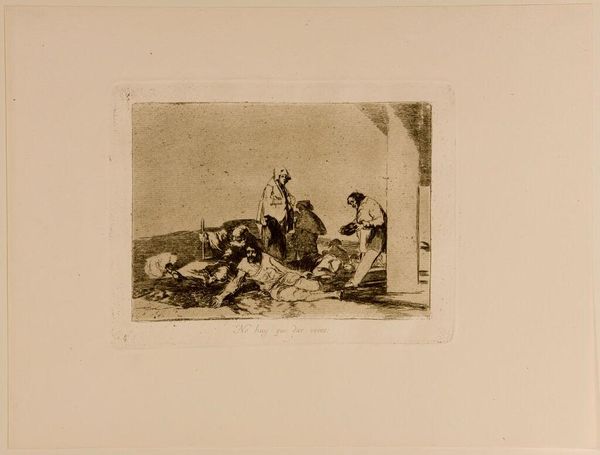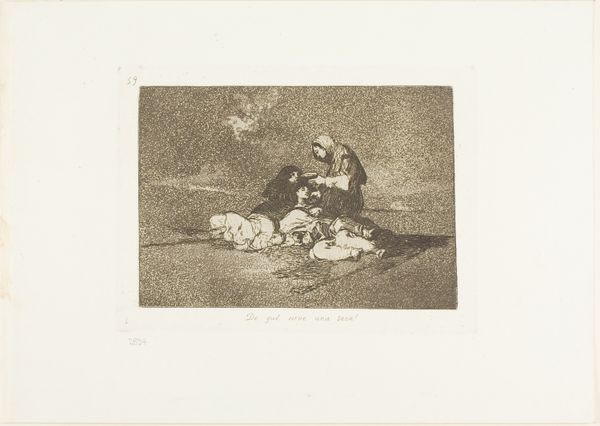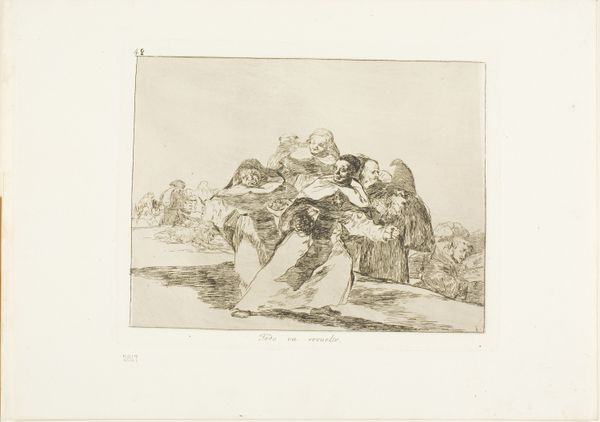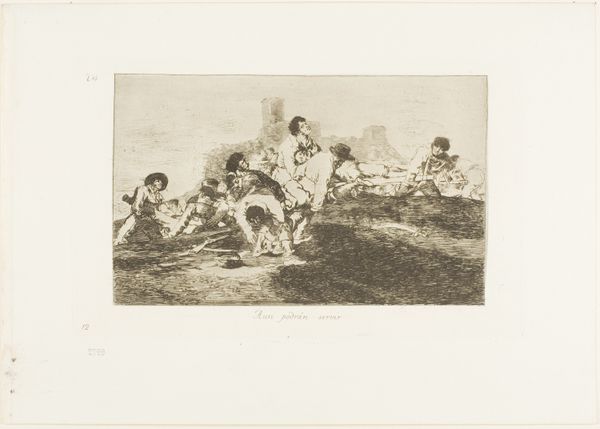
It's no use crying out, plate 58 from The Disasters of War Possibly 1812 - 1863
0:00
0:00
drawing, print, etching, paper
#
drawing
#
narrative-art
# print
#
etching
#
war
#
paper
#
romanticism
#
history-painting
Dimensions: 128 × 182 mm (image); 158 × 210 mm (plate); 240 × 340 mm (sheet)
Copyright: Public Domain
Francisco Goya created this print, plate 58 from *The Disasters of War*, using etching, aquatint, and drypoint. These are intaglio processes, where the image is incised into a metal plate, inked, and then transferred to paper under high pressure. The stark, contrasting tones are achieved through the manipulation of acid and its effects on the metal. Lines are bitten into the plate with acid, and aquatint creates areas of tone through a porous ground. Drypoint involves scratching directly into the plate, creating a burr that holds ink, resulting in a velvety texture. The labor-intensive nature of printmaking is evident in the fine details and expressive lines. Goya would have spent hours preparing the plate, applying grounds, etching, and proofing. This hands-on process imbues the work with a sense of immediacy and rawness, appropriate for the scene depicted, a scene likely witnessed during the Peninsular War. Ultimately, understanding Goya's printmaking techniques allows us to appreciate the deep connection between the artist’s hand, the material processes, and the powerful social commentary conveyed in his work. It's a reminder that even in fine art, the 'how' is as important as the 'what'.
Comments
No comments
Be the first to comment and join the conversation on the ultimate creative platform.
